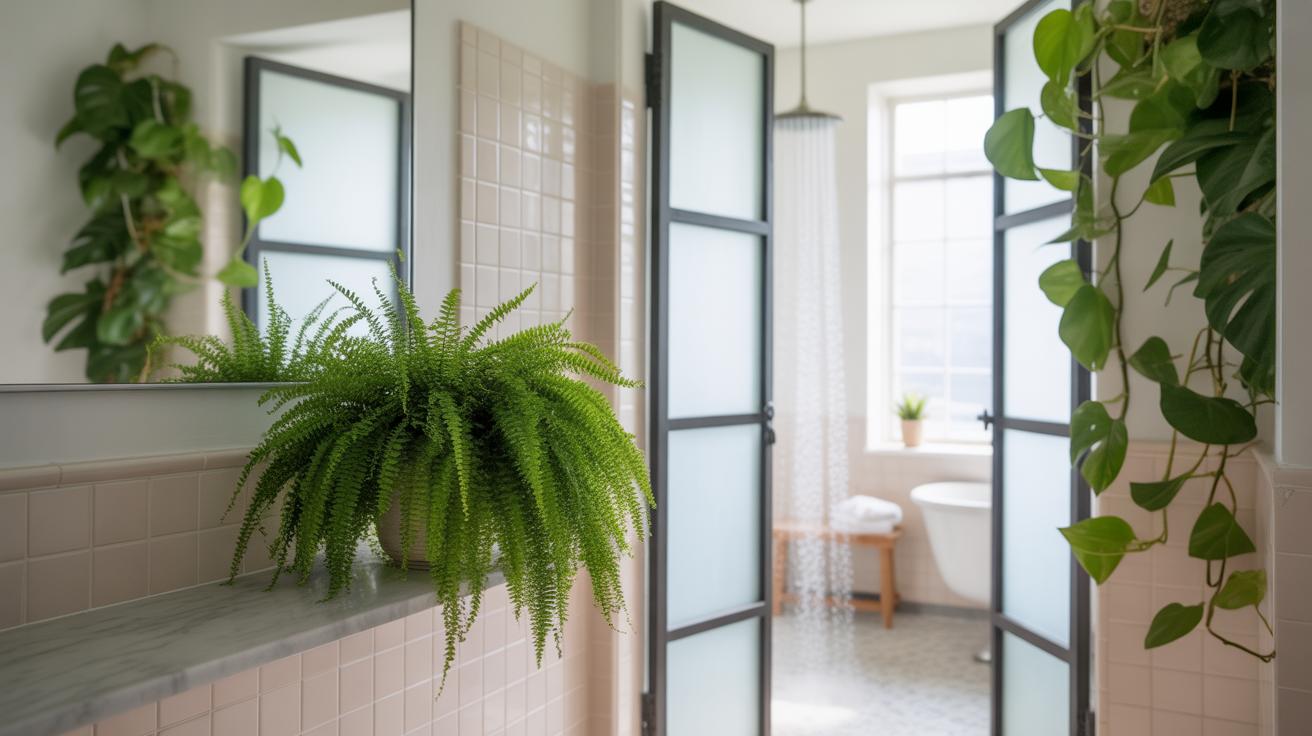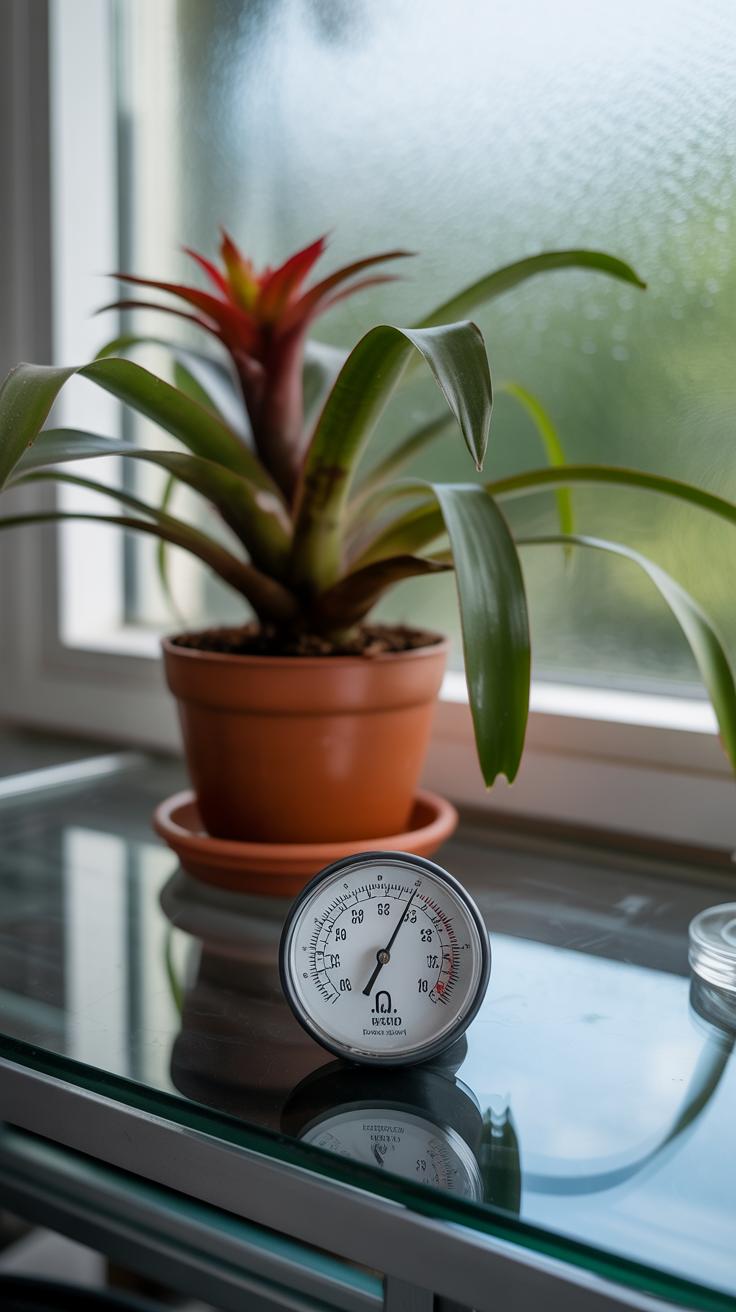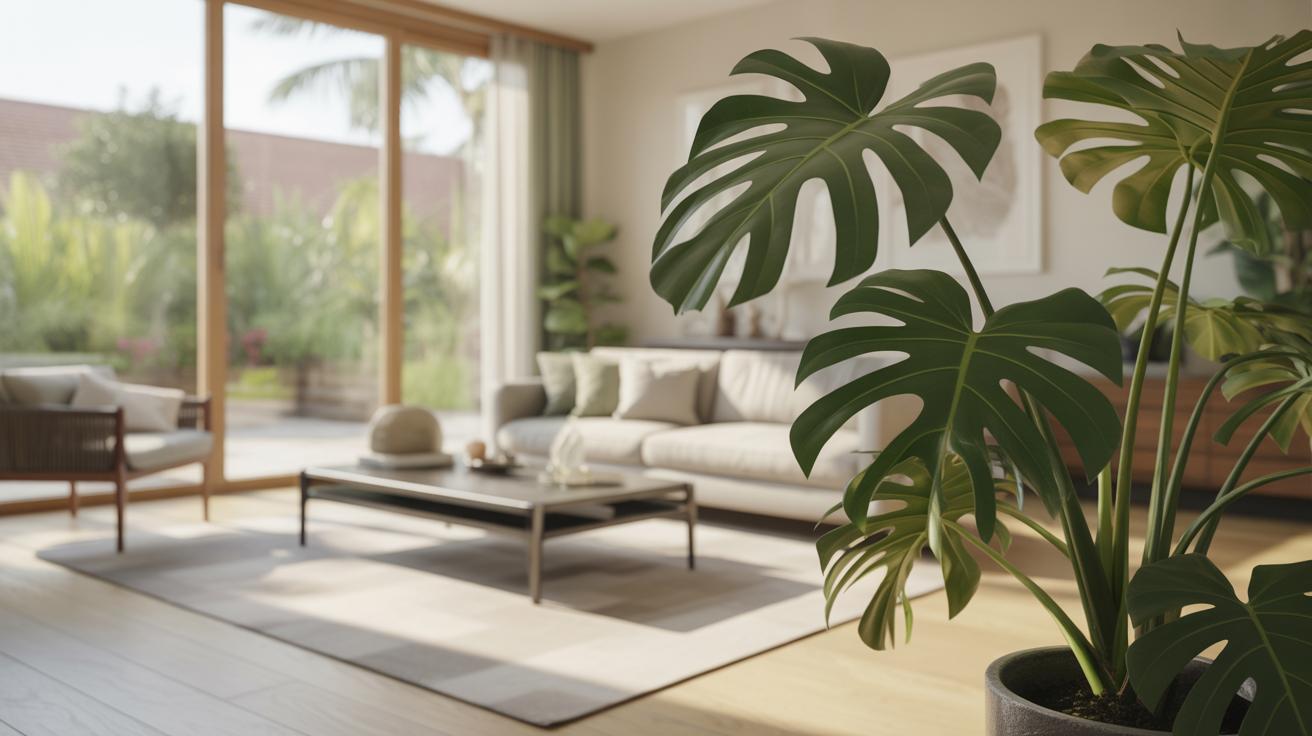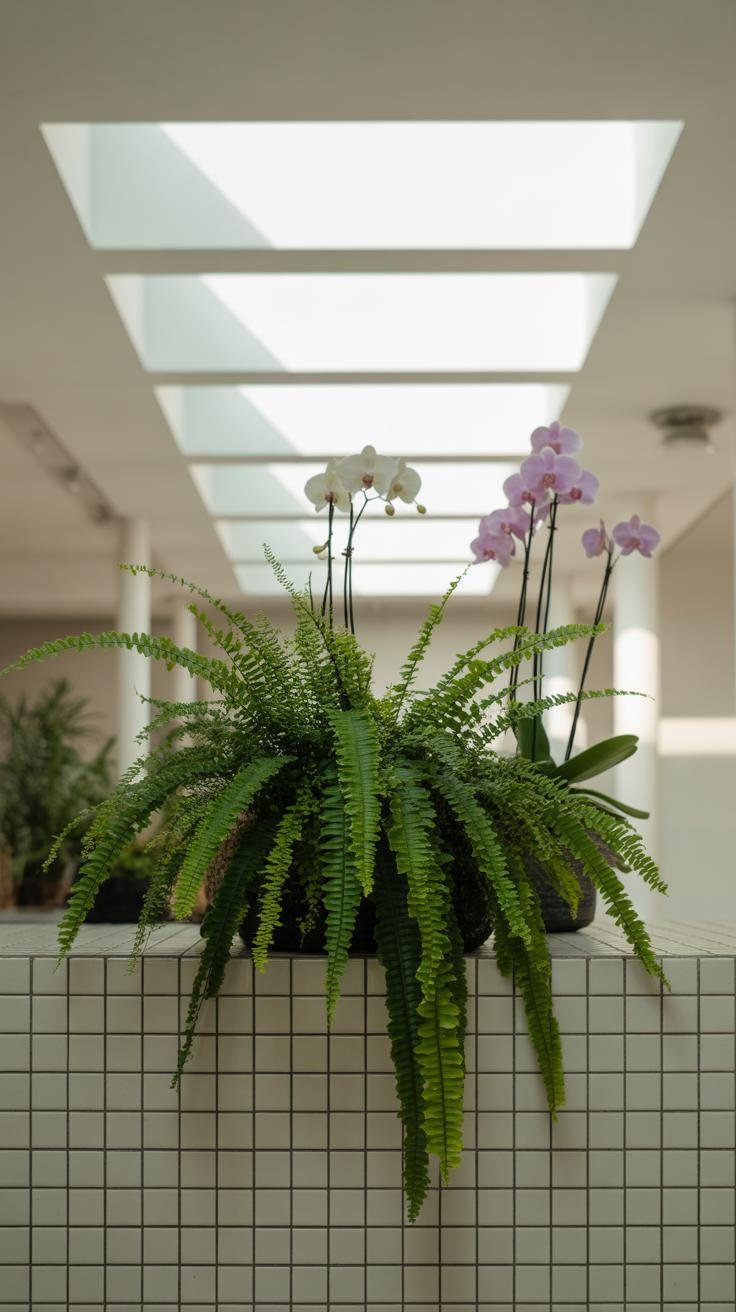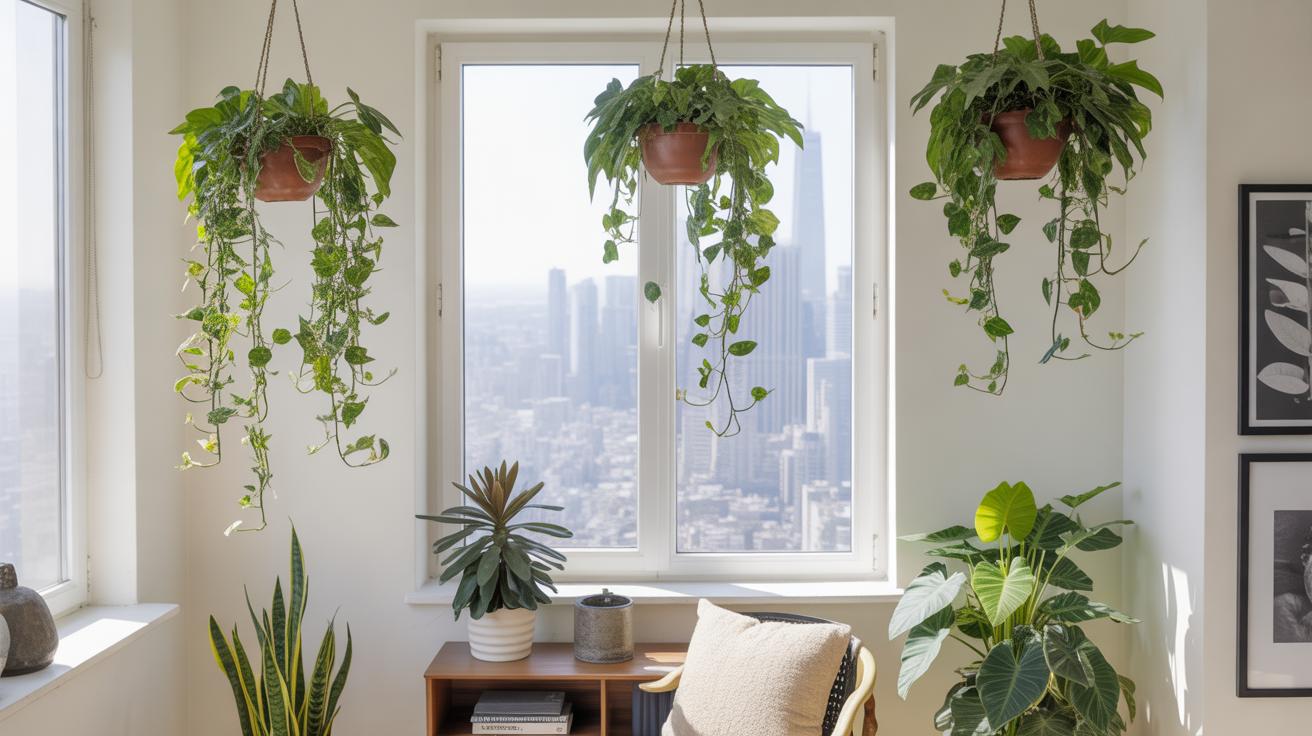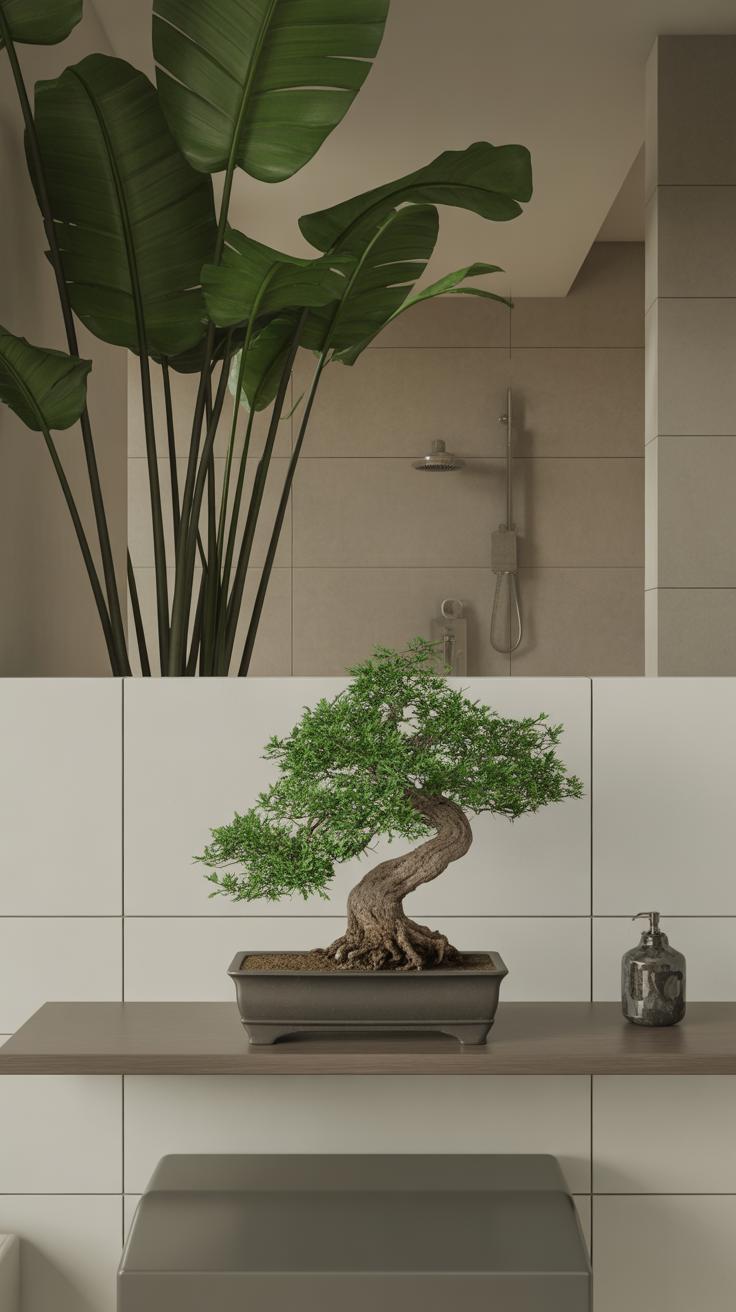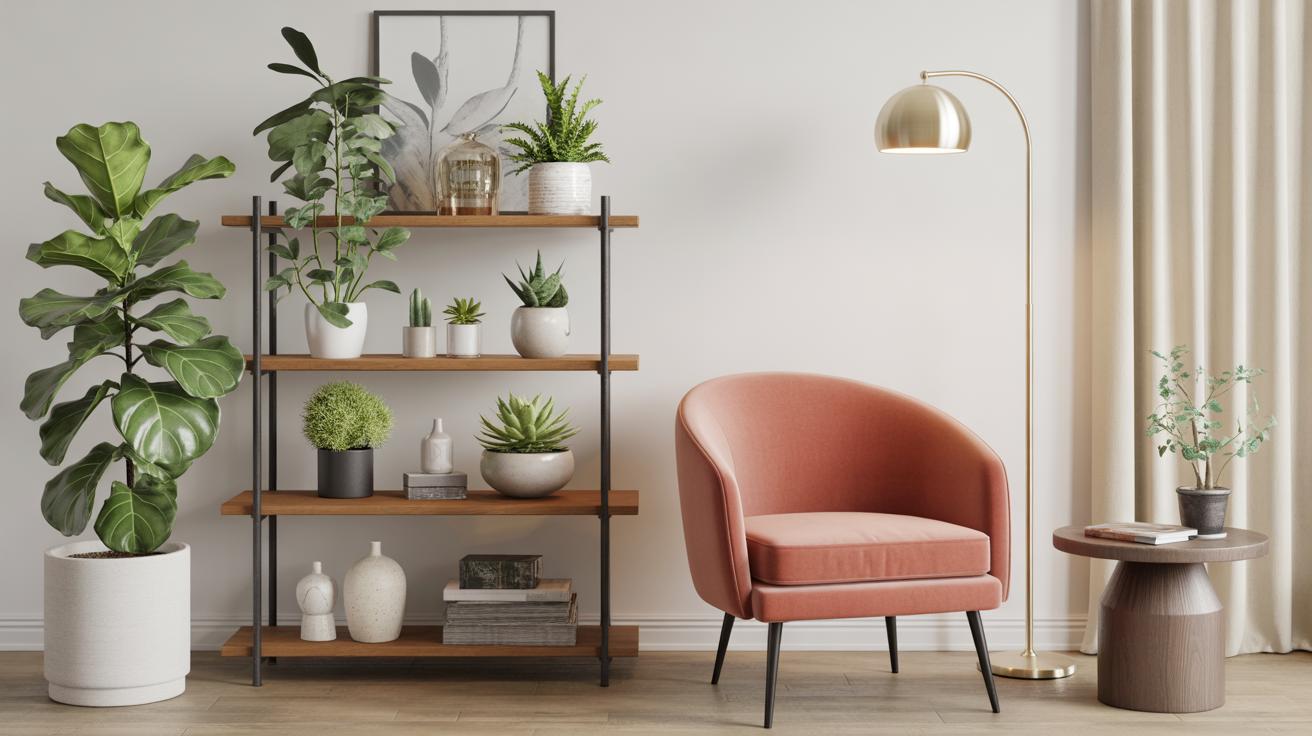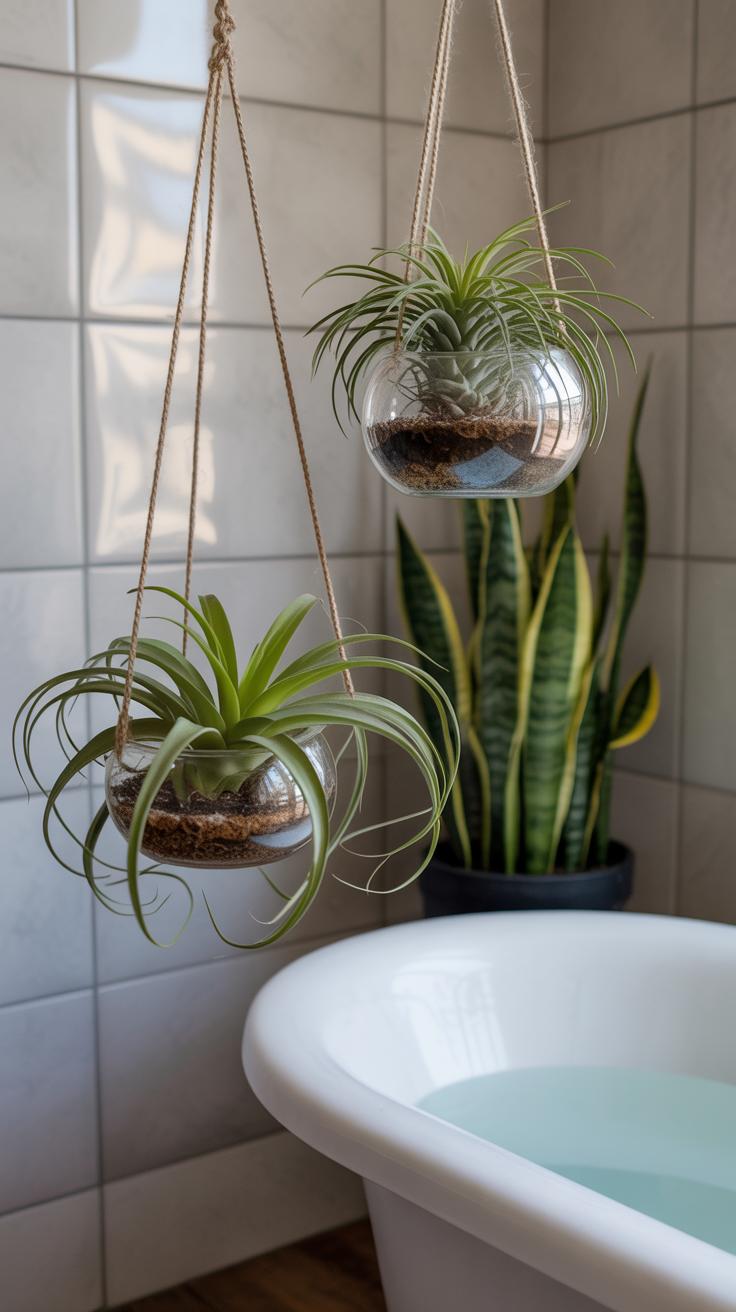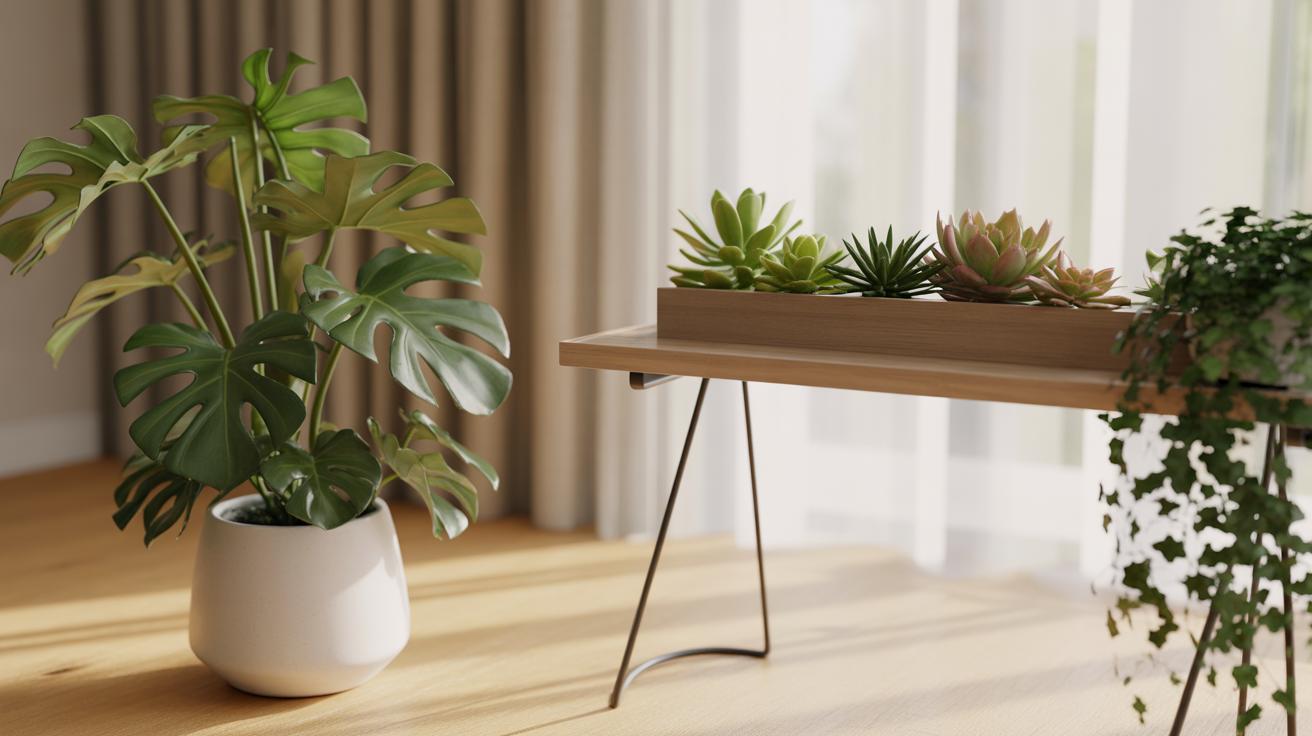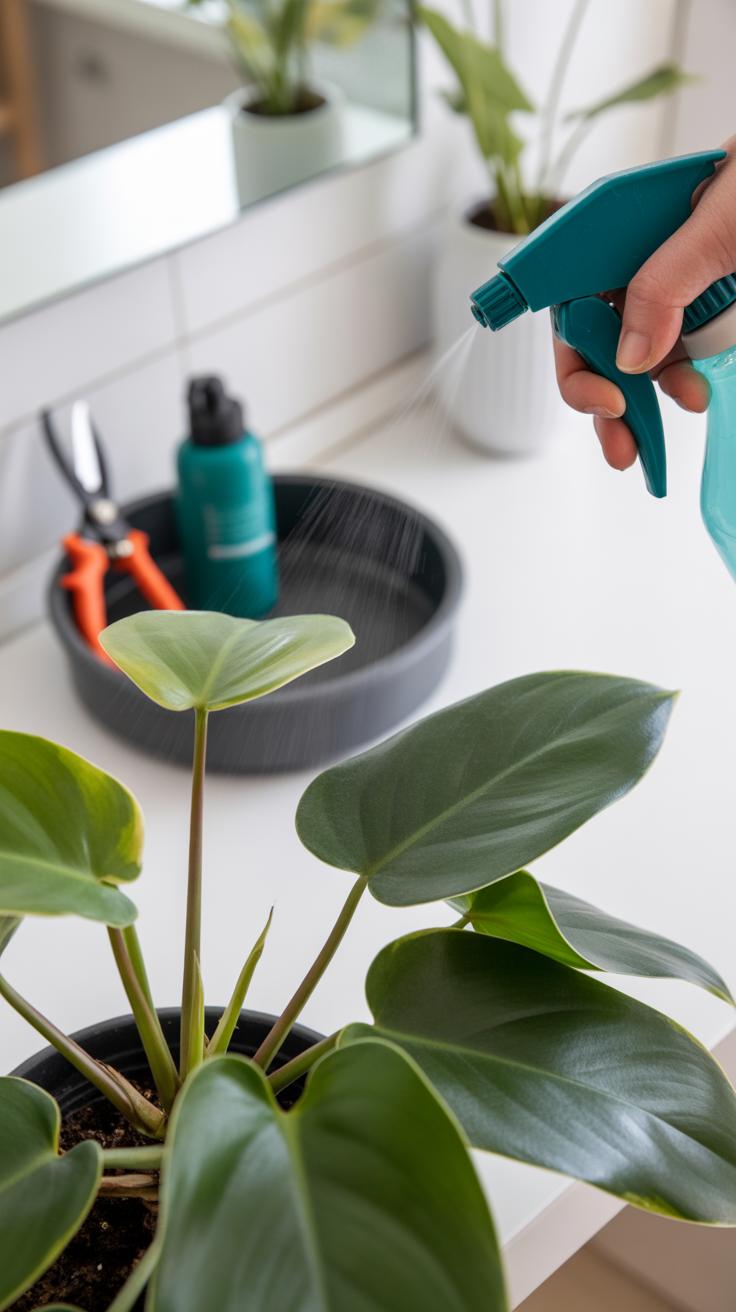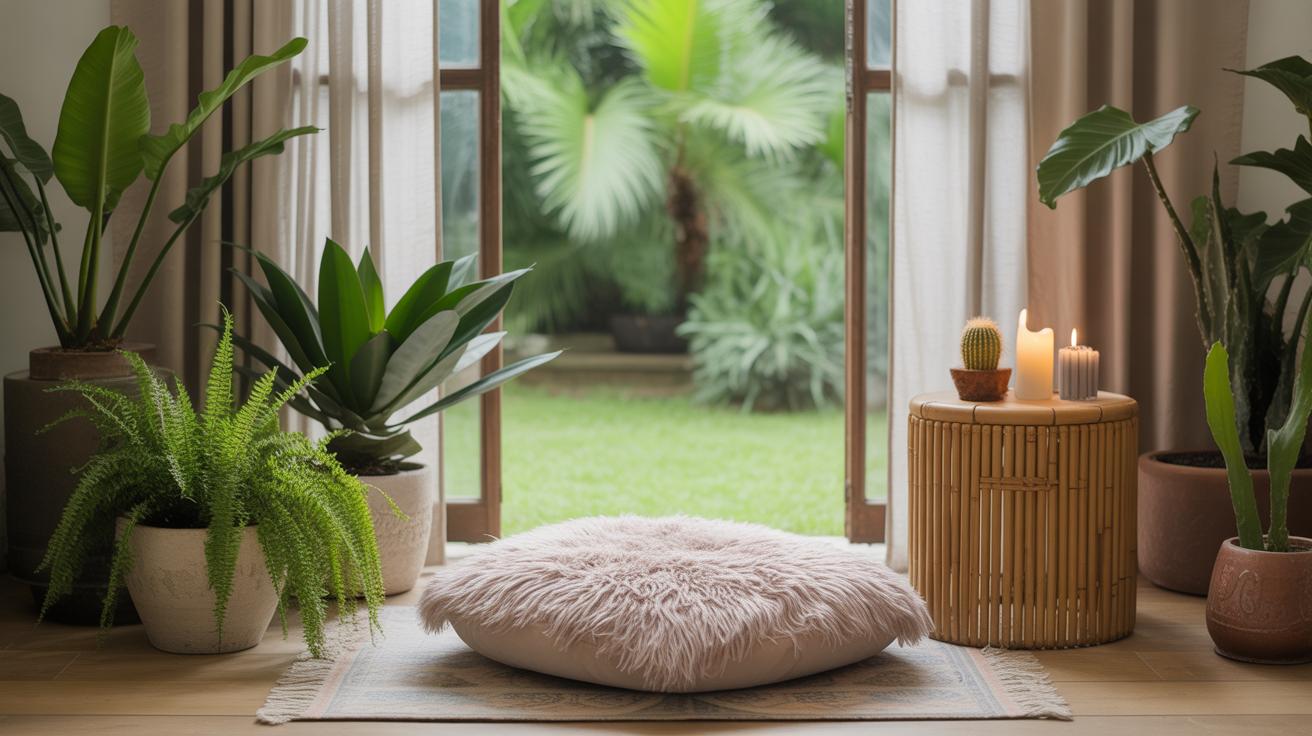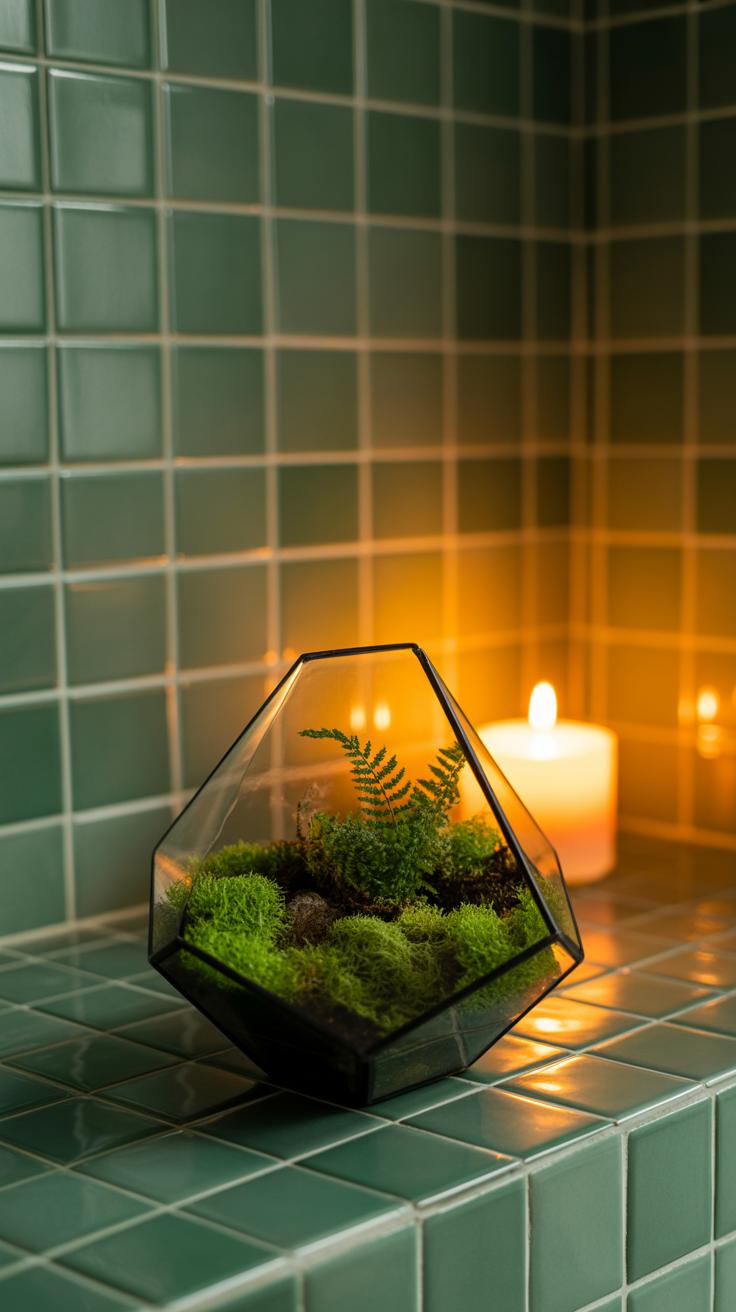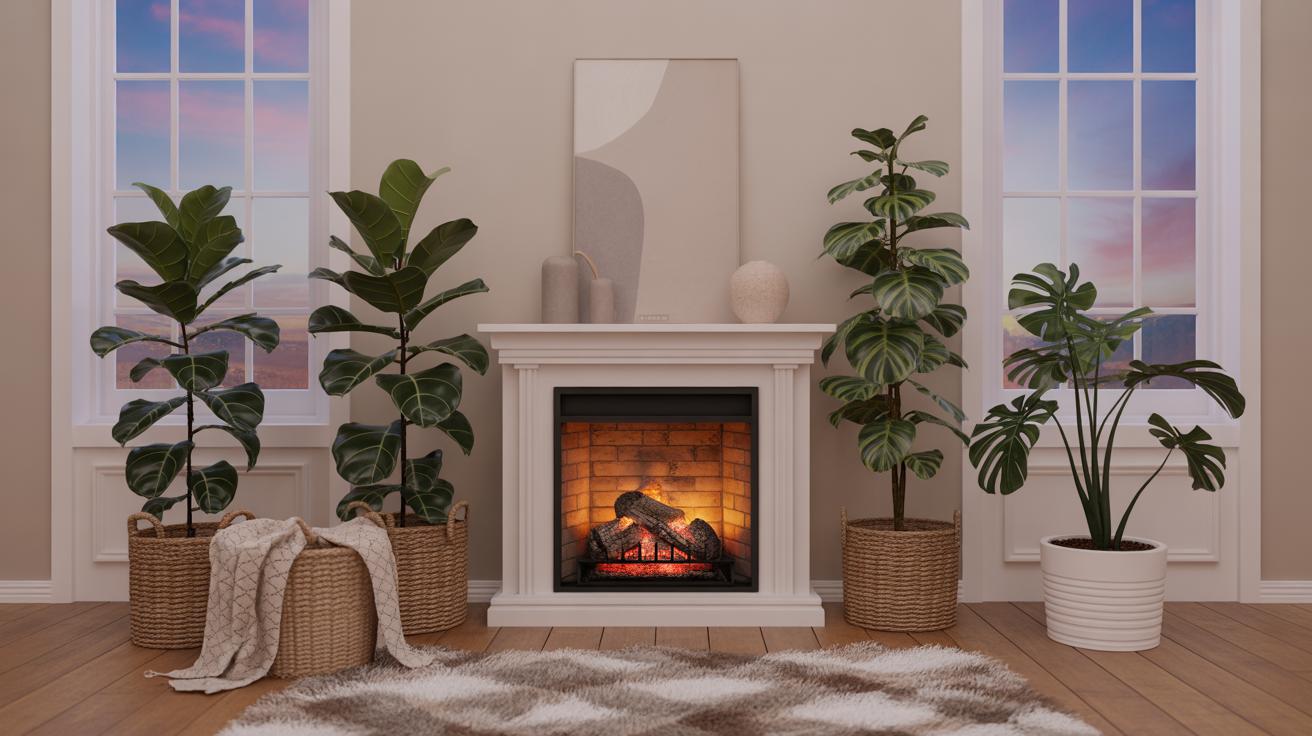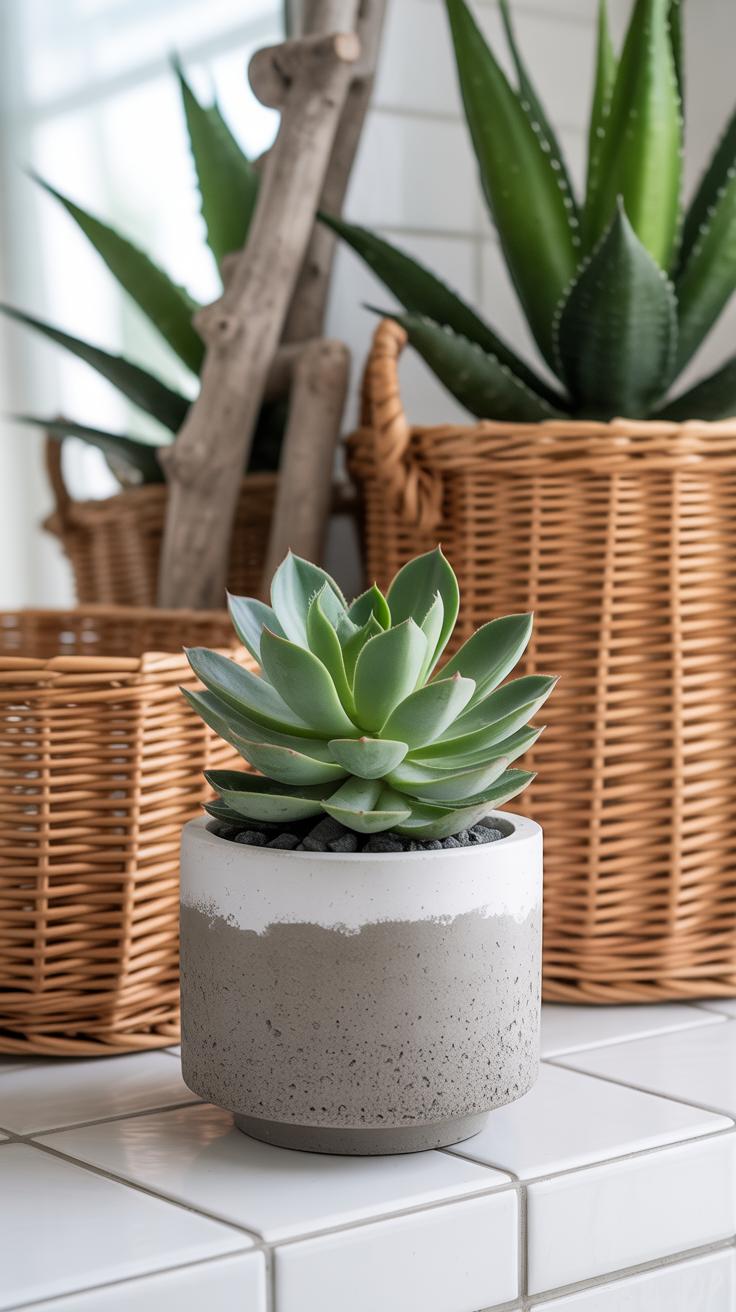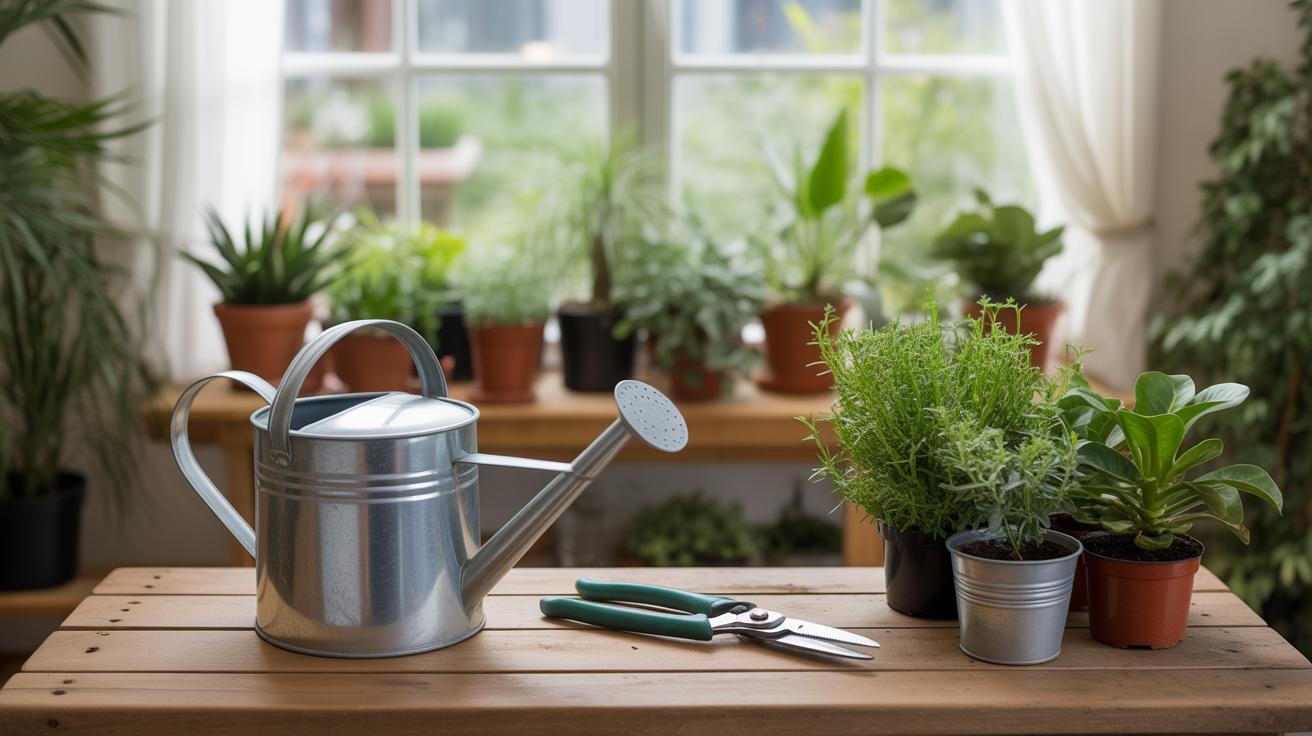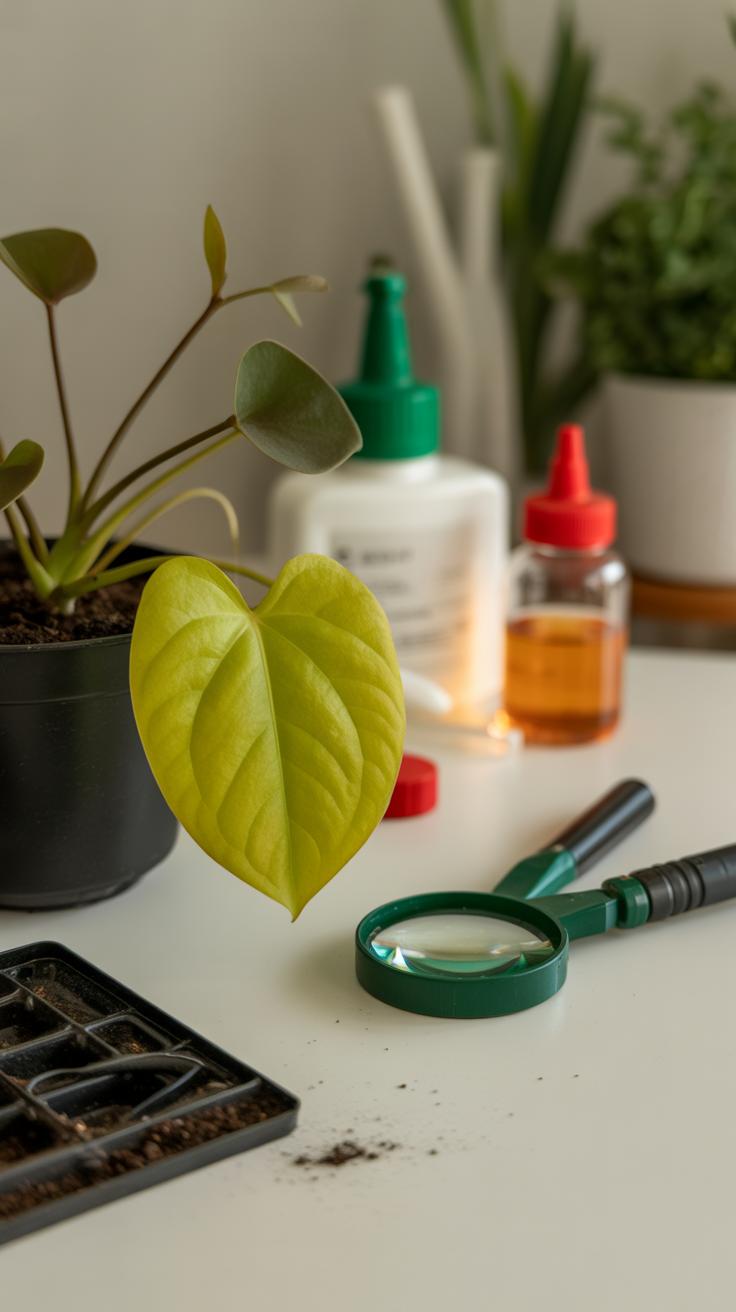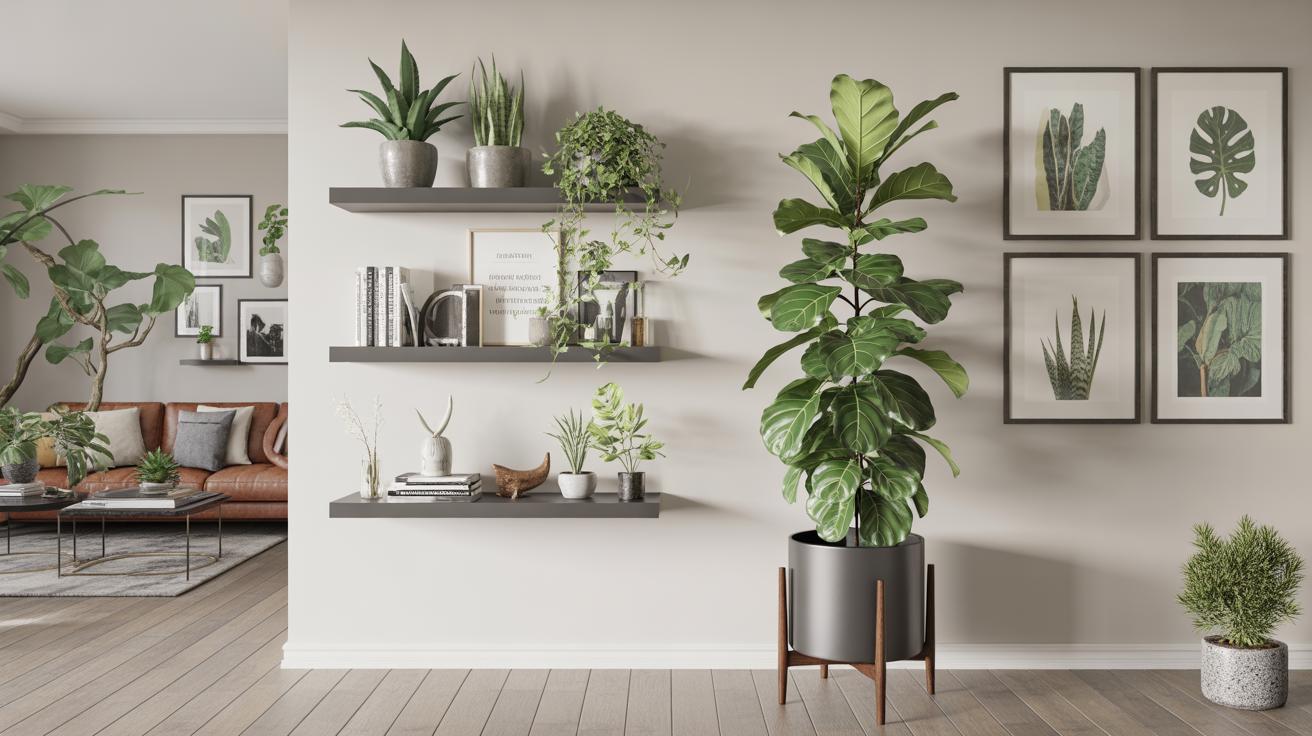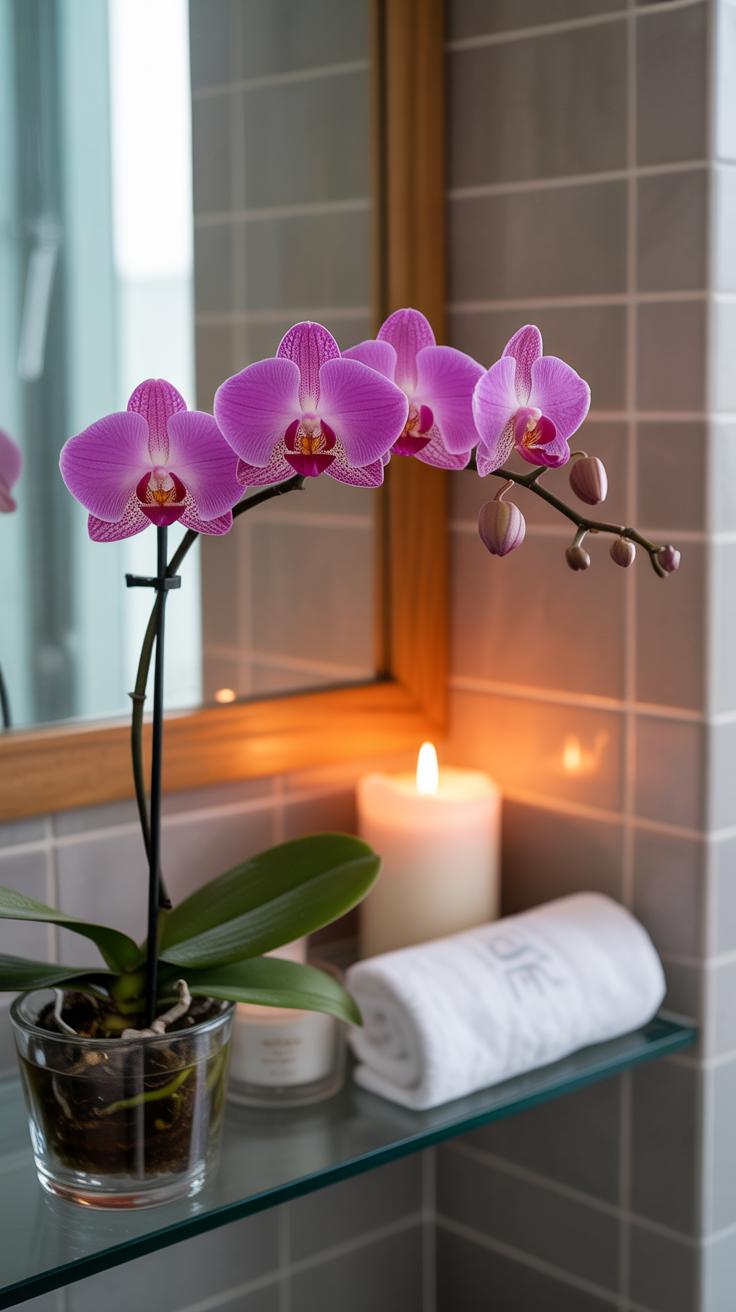Introduction
Bathrooms are often overlooked when it comes to home decoration. However, they offer a unique environment for certain plants. Plants that thrive in high humidity can bring life and freshness into your bathroom space. This article explores selections of bathroom plants that love humidity and can thrive in this special indoor climate.
You will learn about different plants that love moisture, how to care for them, and how to arrange them in your bathroom. These ideas will help you create a green, lively, and healthy environment right where you need it most.
Understanding Bathroom Environment for Plants
Humidity Levels in Bathrooms
Bathrooms tend to have fluctuating humidity, mostly rising sharply during and after showers or baths. You might notice the air gets thick with moisture for a while, then slowly dries out. This cycle creates a fairly moist environment that favors plants needing consistent humidity—say, around 50% to 80%. That range usually keeps tropical plants happy, but if your bathroom lacks ventilation, humidity can sometimes spike beyond what many plants can handle long-term.
It’s interesting how even short bursts of humidity can help plants recover from dry spells elsewhere in your home. If you’re like me, you might forget to mist your plants regularly, yet the bathroom’s natural humidity can catch them at just the right moments. But too low or too inconsistent humidity would stress moisture-loving plants, so it’s really about that balance.
Lighting Conditions You Can Expect
Lighting in bathrooms varies quite a bit. Some bathrooms have windows, offering natural light, though often diffused or limited by frosted glass or small sizes. Others rely mainly on artificial light—overhead bulbs or vanity lights—which isn’t always ideal. Still, many plants tolerate low or indirect light better than one might expect.
If you have a window that gets morning sun, many average houseplants will thrive there, but darker spaces might force you to pick plants suited to very low light. For example, some ferns and spider plants manage just fine on artificial light or in dimmer spots.
Now, can you grow a sun-loving cactus by a bathroom window that only gets indirect light? Probably not. But a snake plant or pothos? Those will generally do okay. Thinking about your bathroom’s unique light pattern will help you choose the right plants instead of relying on guesswork.
Top Humidity Loving Plants for Bathrooms
Bathrooms create a unique home for plants, especially those craving moisture. Ferns, orchids, and air plants seem to flourish where humidity lingers. Their care is manageable if you understand each one’s needs—and they add different touches to your space.
Ferns and Their Benefits
Ferns like Boston, maidenhair, and bird’s nest are favorites for bathrooms. Their feather-like fronds bring a lush, green softness. They generally prefer indirect light, like a north-facing window or diffused daylight. Overwatering can be a pitfall—you want soil that stays moist but never soggy. It’s tricky balancing their thirst with roots that don’t drown, but bathrooms tend to help with that. Plus, they really make the room feel alive and fresh, which I always enjoy, especially after a hot bath.
Orchids and Air Plants for Elegance
Orchids often surprise people—they don’t need bright sunlight, just some indirect light and humidity, so bathrooms suit them well. They bloom beautifully and give your bathroom a sophisticated feel—kind of like you brought a bit of a greenhouse environment indoors. Air plants, meanwhile, don’t require soil at all and are quite adaptable. They soak up moisture directly from the air, which makes the bathroom ideal. Just mist them occasionally and rotate for even light exposure. Their sculptural form adds a modern touch, but watch out: too little air circulation might cause trouble.
How to Choose Plants Based on Bathroom Size and Layout
Picking plants for your bathroom isn’t just about what grows well in humidity; your space really shapes the options. For tight bathrooms, floor space is often scarce, so you might want to look up instead of out. Hanging plants like pothos or string of pearls work well—they take up no room below and still bring life to the space. Small potted plants on shelves or windowsills can also fit nicely without feeling cramped.
Vertical gardens are another way to play with height and add greenery without crowding. You could try mounting small planters on a wall or create a framed terrarium to add texture without bulk. A terrarium can be neat, especially with compact plants like air plants or ferns, adding moisture and charm in one piece.
For larger bathrooms, you have more freedom. A big monstera or fiddle leaf fig can act as a statement piece, catching attention and breaking up open space. Groupings—maybe a tall plant next to several smaller pots—can create a kind of indoor “garden corner.” But watch that they don’t end up blocking movement or feeling cluttered. It’s tricky; sometimes less is more, even in big rooms.
Have you thought about how the bathroom layout might limit where plants go? You can’t just plop a tall one next to the toilet—it needs a spot with enough indirect light and some breathing room. The placement and choice have to work together. So, consider what you want the plants to do: brightening a dull corner, adding softness to hard lines, or just making the air feel fresher. That helps figure out which plant fits where.
Plant Placement Ideas for Bathrooms
Finding perfect spots for your bathroom plants can be a bit tricky. Bathrooms don’t usually boast large windows, so you have to be creative in placing your greenery where they get enough light and humidity. I’ve found that simple shelves near the shower or above the toilet can work surprisingly well. They keep plants out of the way yet close to the moist air.
Windowsills remain a classic choice. Even a small window lets in natural light, which is probably the best for your plants. If your bathroom window is south-facing or bright enough, placing small pots or succulents there can do wonders. Though, sometimes windowsills get crowded with toiletries. It’s a bit of a balancing act.
Hanging baskets add charm and save floor space. I’ve tried hanging some ferns and they loved the humidity. You can use ceiling hooks or wall-mounted brackets. Hanging plants near the shower or bath creates a mini jungle effect and keeps them out of splash zones but still benefits from steam.
Mirrors can help too. Besides making the space feel bigger, they bounce light around, so try positioning your plants where reflected light touches them. It’s not as bright as direct sun but enough to keep many humidity-loving plants happy.
For vertical space, wall-mounted planters or pocket gardens bring a fresh dimension. They don’t clutter counters or floors. Plus, that vertical greenery can act almost like natural art. I’d say, consider staggered shelves or wall strips—they look good and keep your plants thriving in that humid bathroom air.
Essential Care Tips for Bathroom Plants
Keeping plants happy in a humid bathroom isn’t always as simple as it sounds. You might think that the constant moisture means watering less, but it’s a bit more nuanced than that. Since bathrooms hold high humidity, the soil tends to stay moist longer, so you’ll want to cut back on watering to avoid soggy roots. A good rule is to check the soil with your finger—if it feels damp a couple of inches down, skip watering this time. Overwatering is a common mistake, even in steamy rooms.
Cleaning leaves might seem trivial, but it’s actually quite key. Dust and soap residues can build up on leaves, blocking light and making photosynthesis less effective. Wiping leaves gently with a damp cloth every few weeks can brighten their look and help the plant breathe better. Sometimes, using a soft brush is handy for delicate leaves that don’t like getting wet.
Managing humidity itself is a bit of a balancing act. While these plants love moisture, poor air circulation can cause fungal issues or mold. Try to air out the room when you can, or consider a small fan if it feels stuffy. I’ve found that keeping leaves dry while the soil is moist seems to help plants avoid trouble. Plus, it makes them look fresh.
Using Terrariums as Bathroom Plant Decor
Terrariums offer a neat way to bring humidity-loving plants into your bathroom without taking up much space. They serve both as decor and mini-greenhouses, creating a cozy environment for certain plants to flourish.
There are two main types to consider: closed and open terrariums. Closed terrariums trap moisture, which keeps the internal humidity high—perfect for bathrooms with limited natural humidity control or small spaces. Think of them as tiny ecosystems where water cycles inside, reducing how often you need to water the plants. Plants like moss, ferns, and fittonias do well here because they enjoy moist air and stable conditions.
Open terrariums, on the other hand, allow for air circulation and are less about trapping humidity and more about maintaining freshness. These are great if your bathroom already has good ventilation or if you find closed terrariums get too damp or moldy. Succulents, air plants, and miniature orchids often thrive in open setups because they need breathing room and don’t like being waterlogged.
Choosing between the two often comes down to how your bathroom’s natural humidity fluctuates and how much care you want to give daily. I recall trying a closed terrarium with ferns, and it was surprisingly low-maintenance—maybe too low, since I almost forgot to check on it. Meanwhile, an open terrarium with air plants needs a bit more attention but adds a light, airy feel.
Have you noticed how the right terrarium can make a bathroom feel less sterile? They’re small, contained, and surprisingly effective in brightening up a corner or a shelf while keeping plants happy where other pots might struggle.
Combining Plants With Bathroom Decor Styles
Modern Bathrooms and Sleek Planters
Modern bathrooms often lean toward simplicity—clean lines, muted colors, and minimal clutter. To keep the vibe intact while introducing greenery, choose plants with sculptural shapes. Think snake plants or ZZ plants. Their upright, bold leaves match contemporary aesthetics.
Match them with streamlined planters in matte black, white, or metal finishes. Avoid anything too fussy. Cylindrical or square pots work well here—nothing ornate. You might even pick geometric ceramic planters or sleek concrete containers for that cool, industrial touch.
Carefully placed, one or two statement plants create an elegant contrast. Just don’t overcrowd. The goal is to keep the space airy but lively. You want the plants noticeable but not overpowering—like art pieces, really.
Rustic and Natural Bathroom Themes
If your bathroom feels cozy with wood accents and earthy tones, then plants that echo nature suit best. Think of ferns, pothos, or spider plants—they bring a soft, natural texture that blends well with rustic settings.
Planters here lean into warmth and imperfections: clay, terracotta, or woven baskets. These natural materials complement wood and stone surfaces nicely. Rough edges and organic shapes add authenticity, which can elevate the space without feeling staged.
You might even use driftwood holders or hand-thrown pottery to add personality. It’s about embracing the imperfect, almost unfinished look. The humidity-loving plants soften the somewhat rugged feel, creating a relaxed, lived-in atmosphere you want to spend time in.
Troubleshooting Common Issues with Bathroom Plants
Preventing Mold and Mildew
Bathrooms can be a tricky place for plants because of the constant moisture. Mold often shows up as a white or gray fuzz on the soil surface or even on the leaves. It’s not just unsightly; it can harm your plant’s growth. If you notice mold, it might mean the soil is too wet or the airflow is poor.
To tackle this, try letting the soil dry out between waterings a bit more than you usually would. You could also replace the top layer of soil or gently scrape off the mold to keep it from spreading. Placing a small fan nearby or opening a window can help air circulate and keep things drier. Choosing pots with drainage holes matters too—it prevents water from sitting stagnant.
Managing Pests in Humid Spaces
Pests love humid areas almost as much as your plants do. Spider mites, aphids, and fungus gnats are some common culprits in bathrooms. They can cause yellowing leaves, sticky residue, or tiny webs. Sometimes you won’t notice them until the problem feels pretty advanced.
Natural control methods work well here—you might spray a mix of water and a few drops of mild dish soap directly on the plants. Neem oil is another option; it’s gentle but effective. Regularly wiping leaves with a damp cloth can remove pests before they multiply. Also, avoid leaving stagnant water in trays or saucers, since that invites gnats.
Sometimes, despite your best efforts, leaf drop can happen. It could be stress from sudden changes in humidity or light. Keeping a steady environment and responding quickly to signs of trouble can help your plants bounce back faster than you might expect.
Benefits of Adding Plants to Your Bathroom
Having plants in your bathroom does more than just brighten up the space. They can actually improve the air you breathe. Some plants work as natural filters, capturing airborne particles and breaking down harmful chemicals. You might notice a fresher feel when you step inside. It’s a bit like having a tiny green air purifier doing its job quietly in the corner.
Plants also help balance humidity, which is especially useful in bathrooms where moisture fluctuates. This can reduce issues like dampness and lingering odors, making the room feel more comfortable. You might not realize it, but a bathroom with balanced humidity is less likely to invite mold or unpleasant smells.
Beyond the physical aspects, having greenery around can lift your mood. There’s something calming about living things. Studies have suggested that even a few plants can lower stress and anxiety levels. When your bathroom feels peaceful, your morning routine could become a little less rushed and tense. Sometimes I catch myself just staring at a small fern or a pothos after a long day, and it somehow helps me unwind.
Would adding a splash of green to your bathroom change how you feel during your daily rituals? It’s a simple tweak, but the benefits — from cleaner air to calmer moments — might surprise you.
Conclusions
Adding humidity-loving plants to your bathroom can transform it into a calm, refreshing oasis. These plants not only improve air quality but also add aesthetic appeal. Understanding the specific needs of these plants ensures they thrive and continue to enhance your space.
With the right care and plant selections, anyone can enjoy the benefits of greens in their bathroom. Experiment with different plants and arrangements to find the style that fits your home and personality best.

